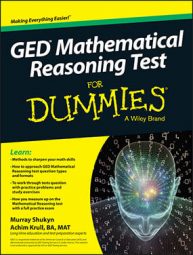To perform well on the GED Reasoning through Language Arts test, you need to read carefully and comprehend what you’re reading, and you need to do it quickly. In addition, for the RLA Extended Reponse (the essay) you have to read one or two documents, and in 45-minutes, write a competent essay. The one or two documents total about 1,000 words. Your response is an analytical essay. You need to extract the data required for your essay answer from the passages, outline and prepare your argument, write the essay, proofread and revise, and finish, all in 45 minutes.
Improving your reading speed is a real asset. Here are a few suggestions on how to read better and more quickly:
Stop subvocalizing. Subvocalizing is a useful technique when proofreading, but silently sounding out the words on reading passages slows you down. Train yourself not to “say” the words when you’re reading a test passage. Humming to yourself as you read is one way to stop you from reading aloud. Break the habit and you’ll read faster.
Read blocks of words. Your eyes can see groups of words at once. Train yourself to see those groups, visually moving from group to group. Not only is this approach faster, but you also pick out important information more easily.
Stop rereading. If you find yourself losing track of which line you’re on and rereading lines you already read, lay a ruler across the top of the page of whatever you’re reading and slide it down as you read from one line to the next. You can’t do that on a computer screen, but sliding a piece of paper down the text on the screen is a good alternative. With practice, you may not need the ruler or paper.
Read with a purpose. Skim the questions before reading the passage to find out what you need to extract from the passage to answer the questions. When reading longer passages for the Extended Response, read to identify the thesis statement, claims made by the authors, and details and jot these down.
Know when to slow down. When important information catches your eye, slow down and read carefully. Balance speed and comprehension. Reading faster enables you to cover more ground in less time, but you still must be able to retain the information. After extracting the useful information, you can step on the throttle.

